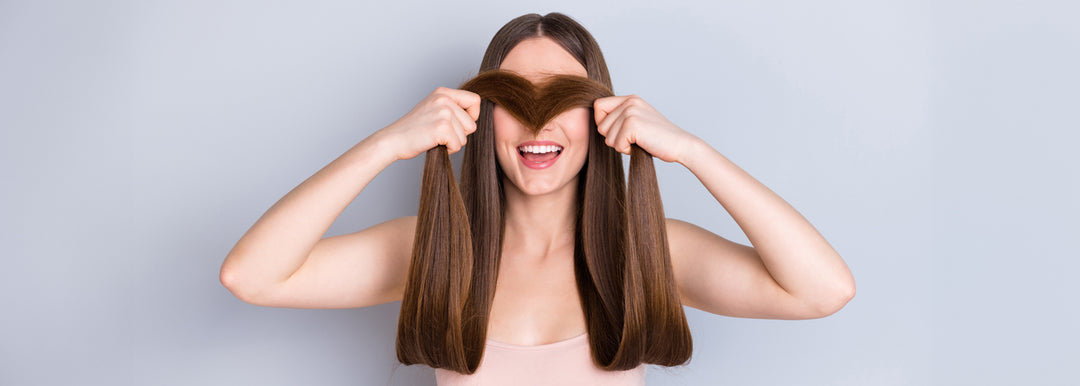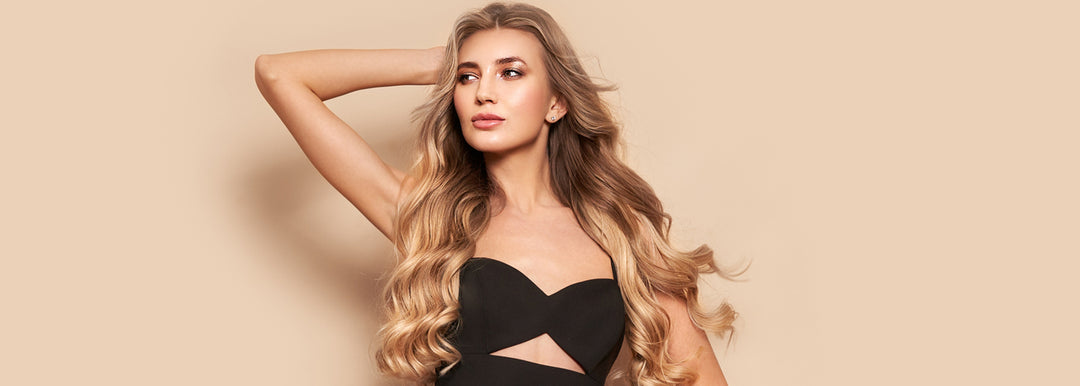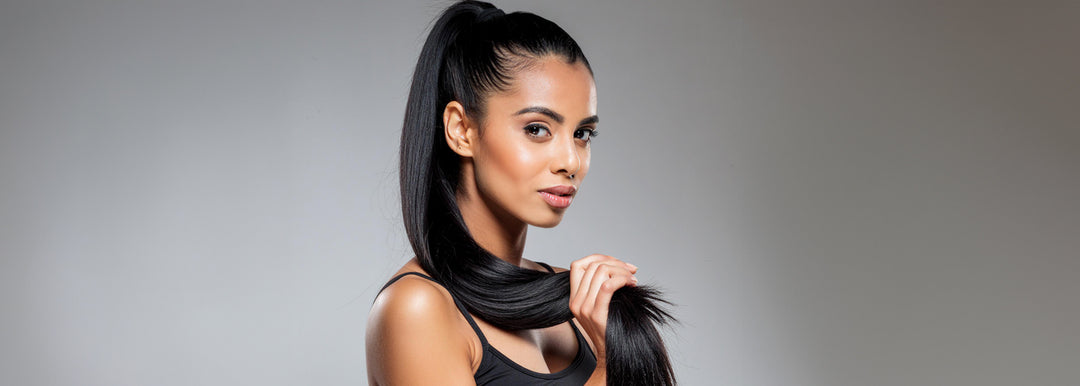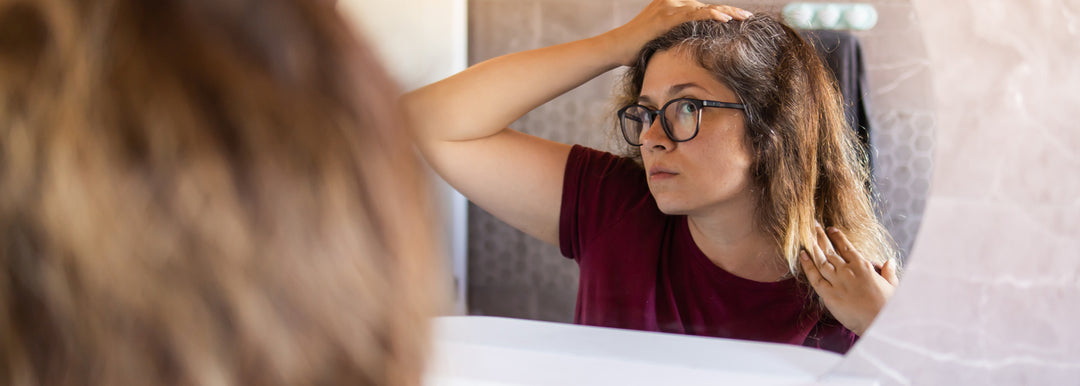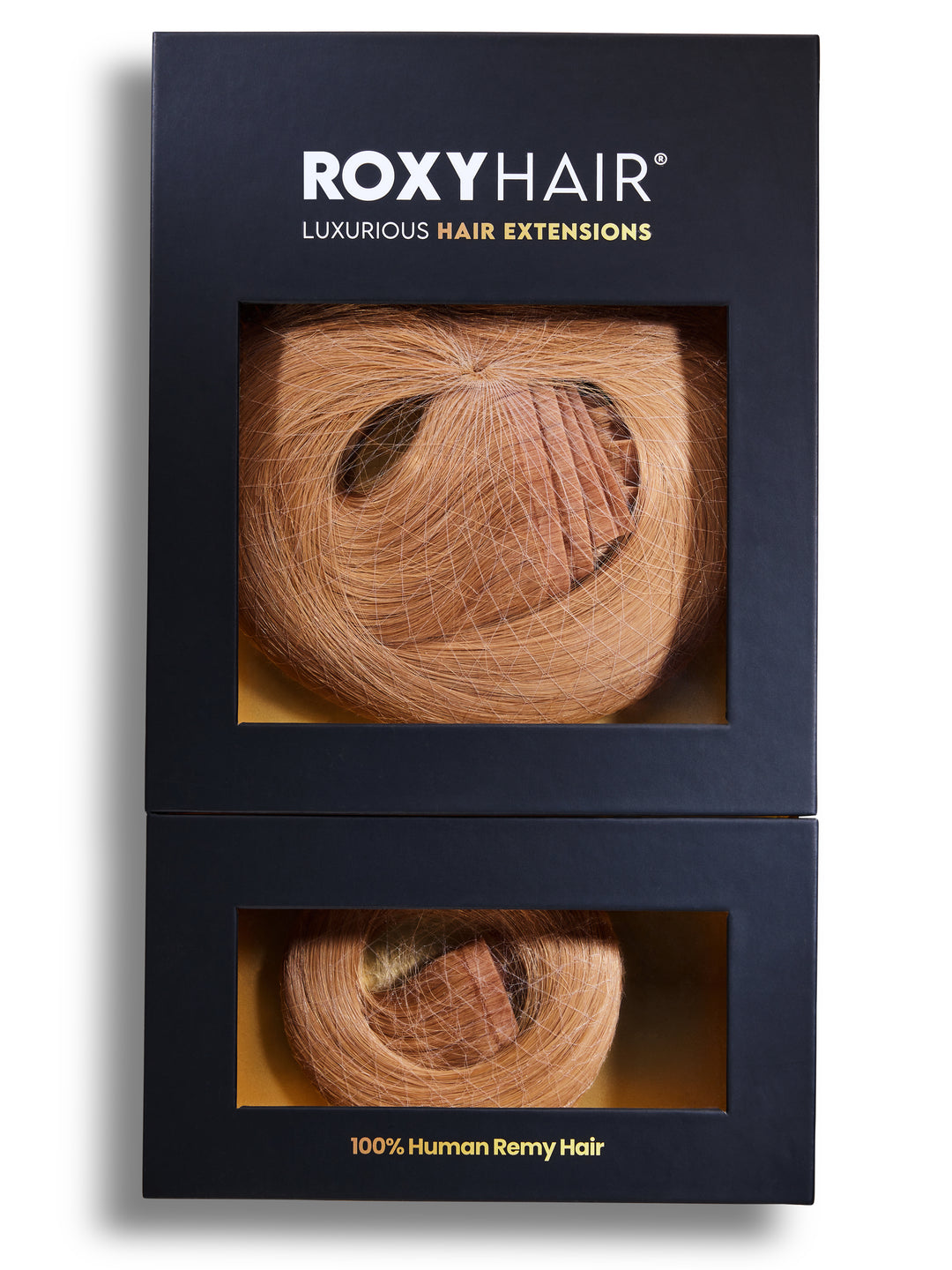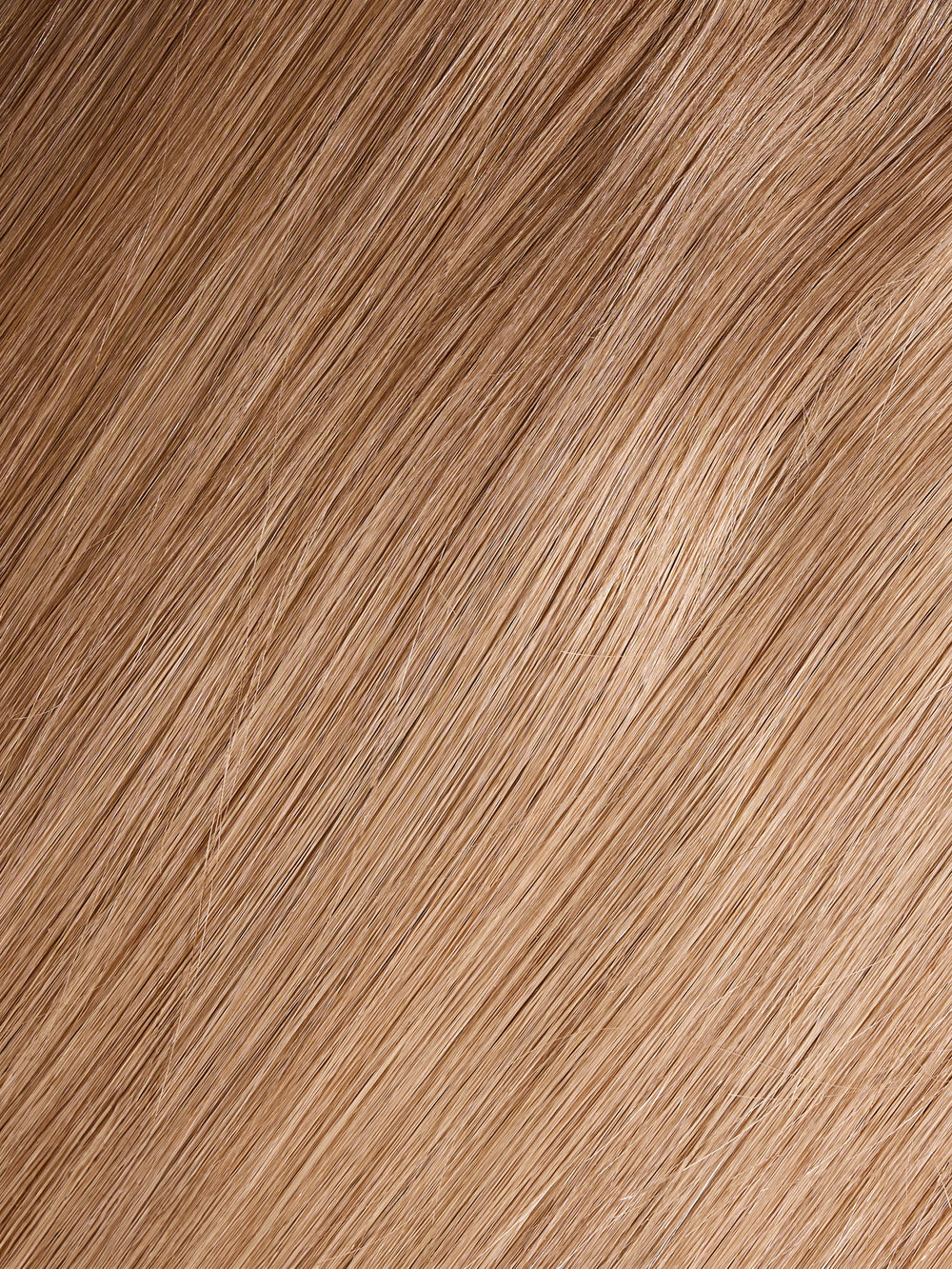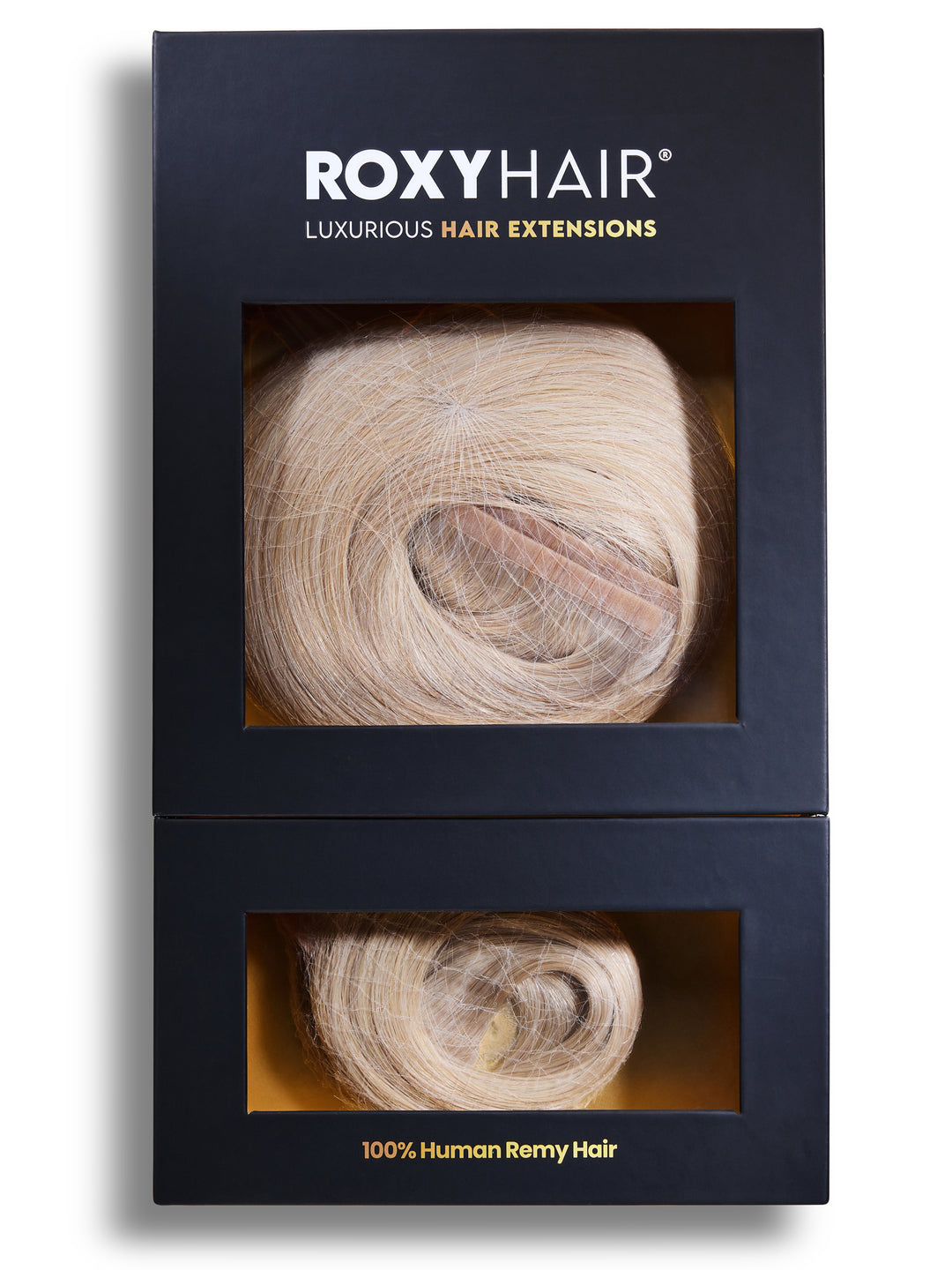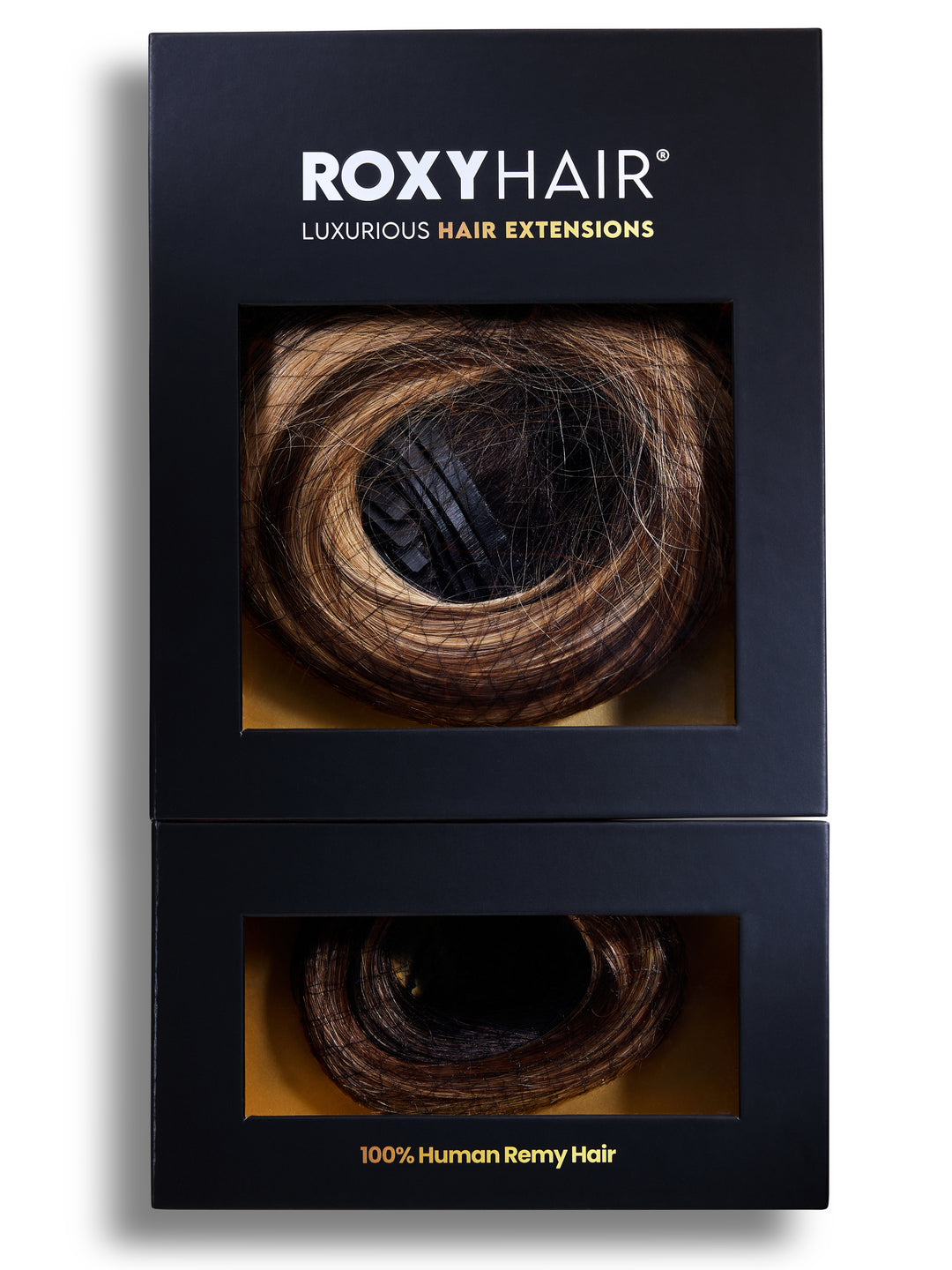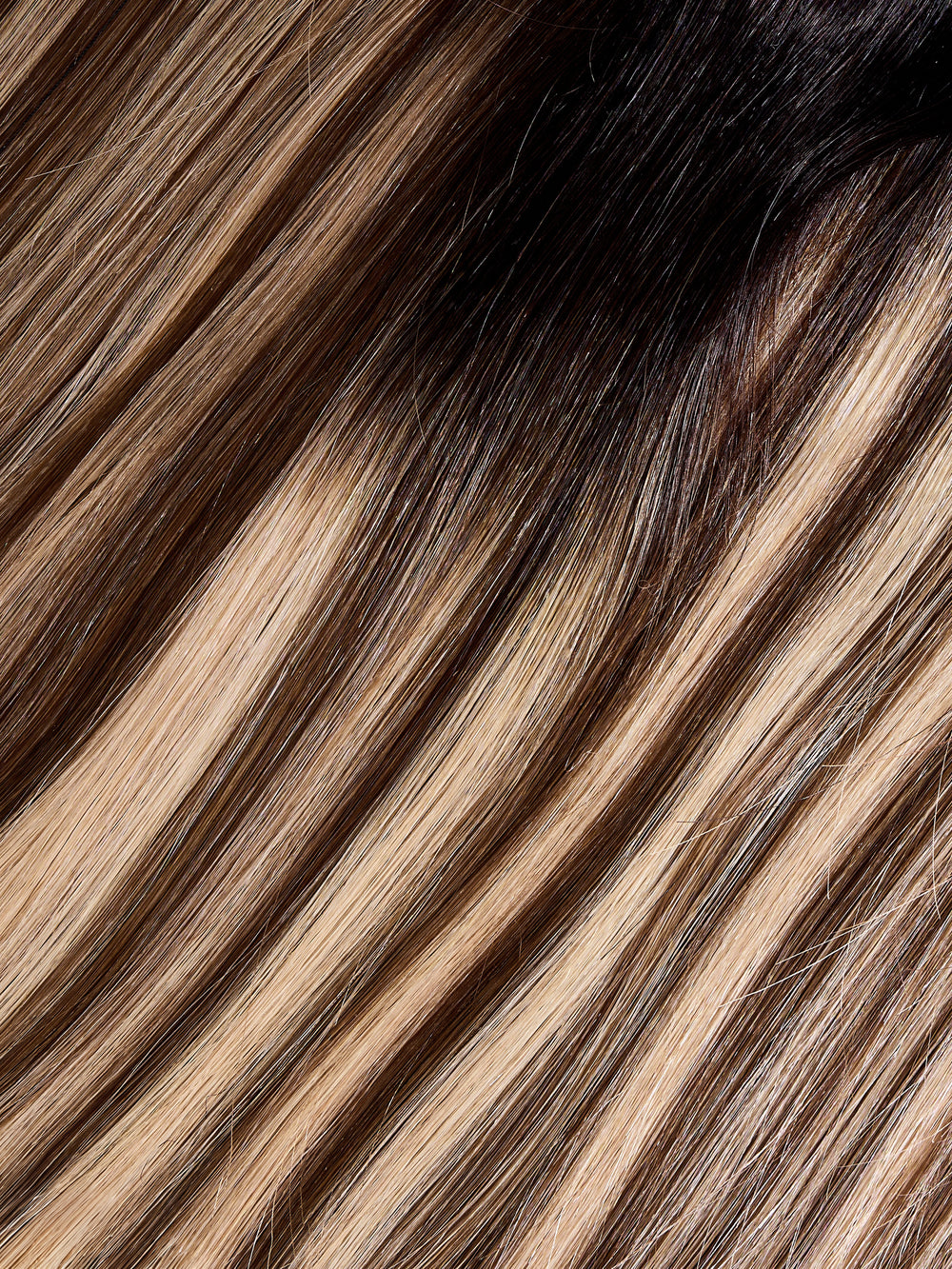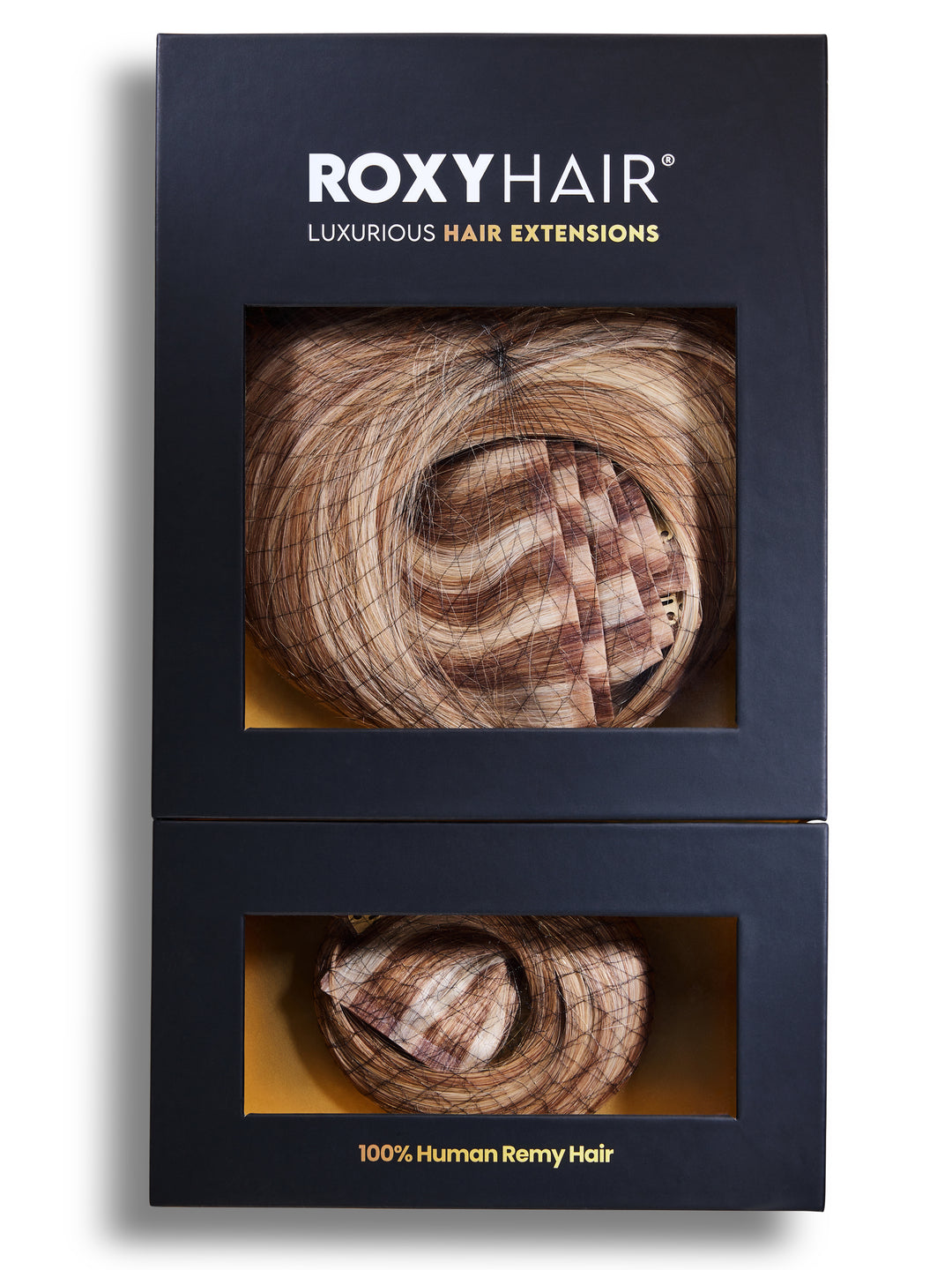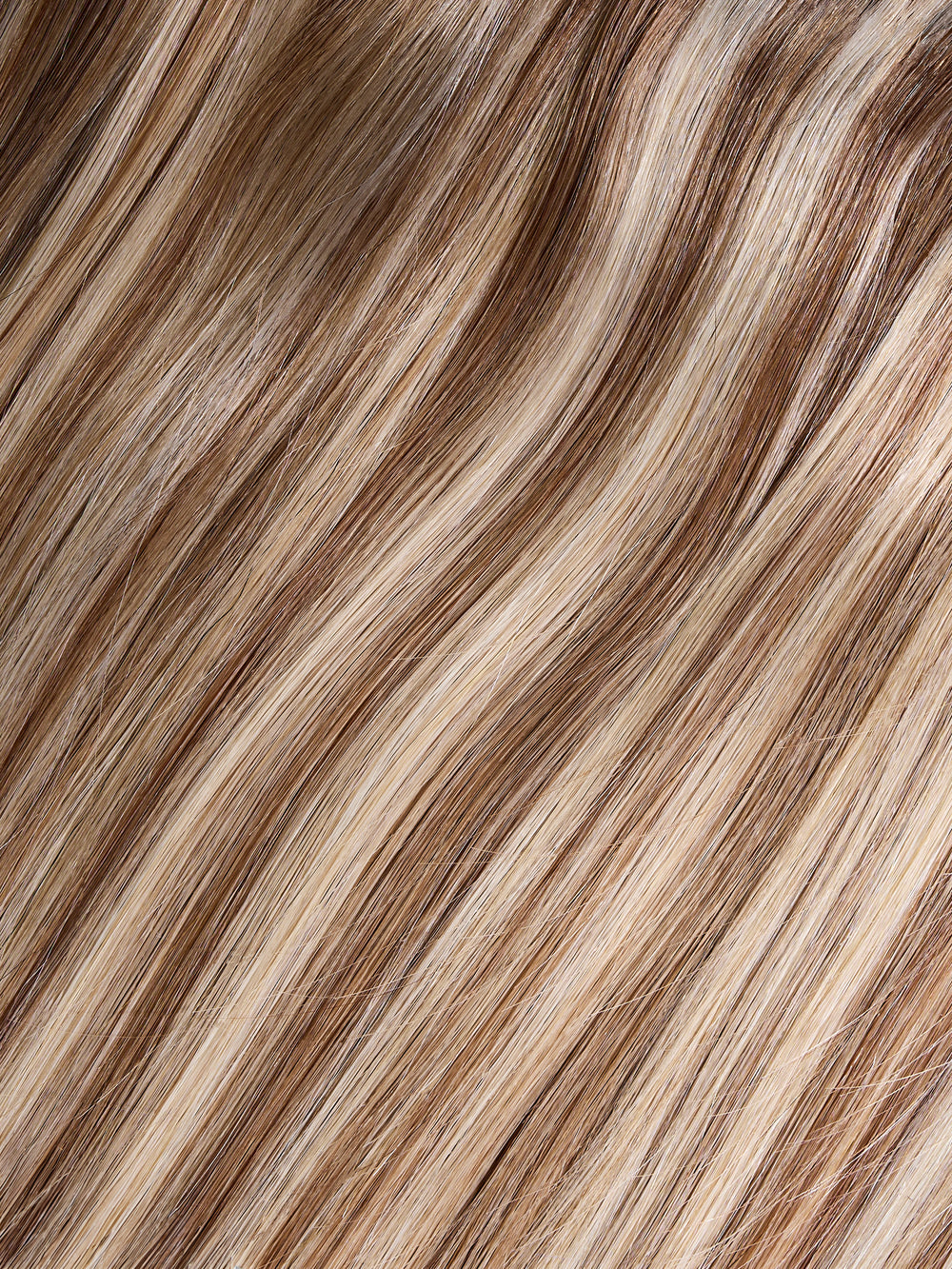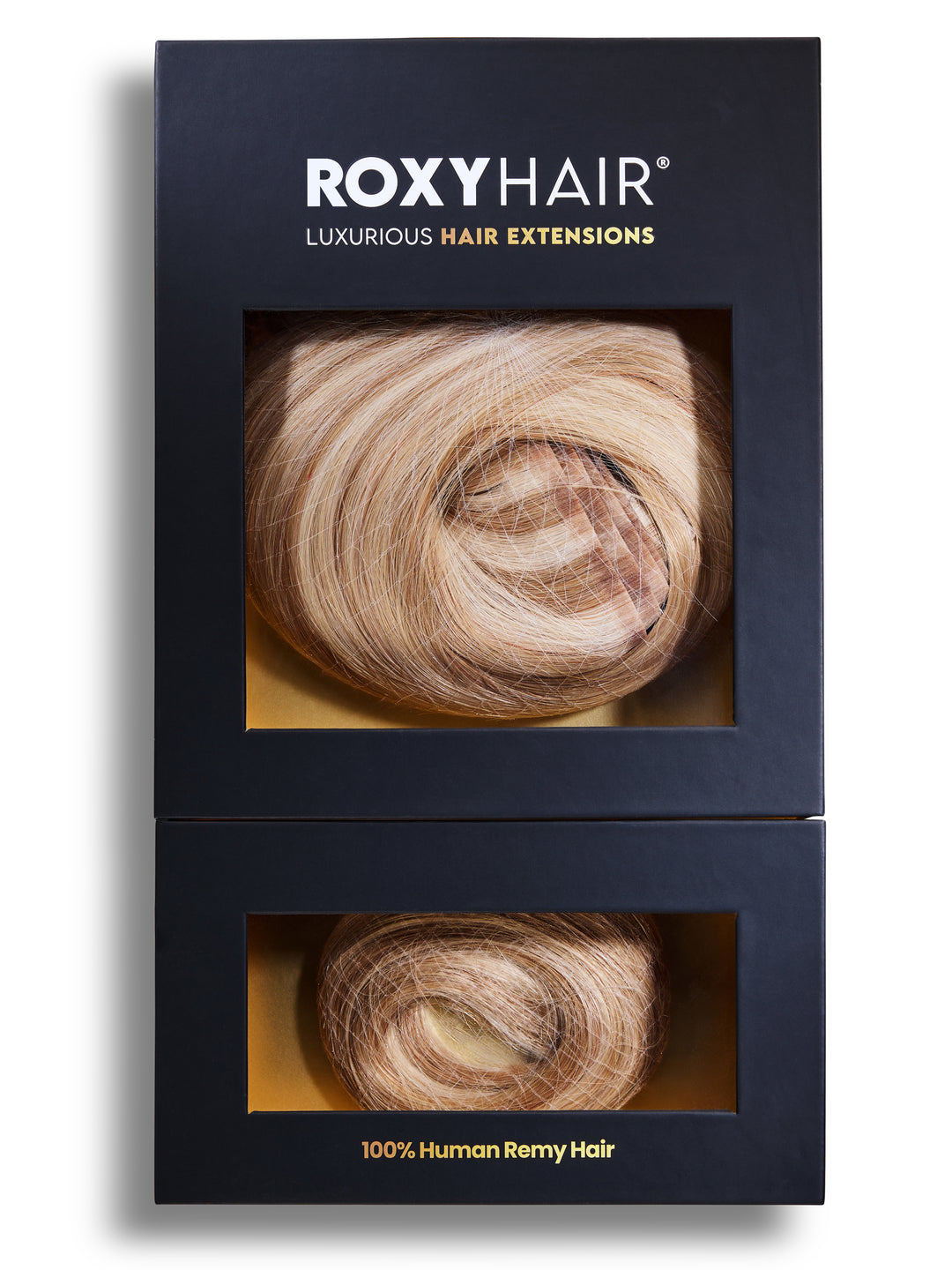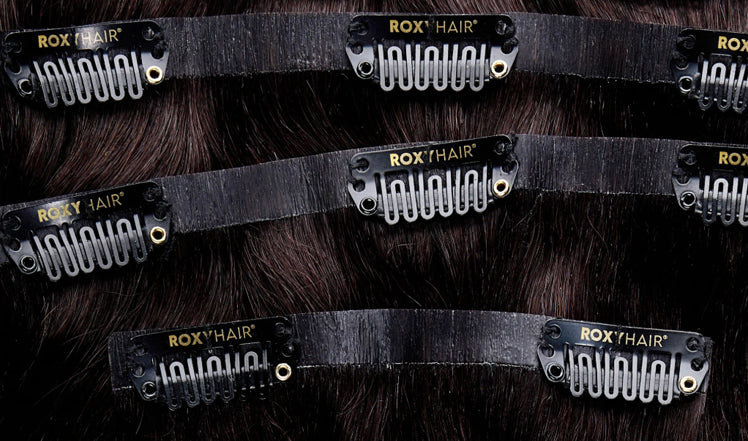Celebrities use clip-in hair extensions to achieve voluminous hairstyles. If you're considering trying clip-ins yourself, you may be wondering: will they damage my natural hair? The good news is that clip-in extensions don't have to damage your hair if you use it properly.
This article provides straightforward tips to safely apply and care for clip-in extensions, just like the celebs do. We'll cover best practices for maintaining the health of your real hair under extensions. Read on to learn how to avoid damage and keep your hair looking great with clip-ins, just like your favorite stars.
Key Points
-
Clip-in hair extensions can be a low-damage styling option when used properly. Cushioning at the roots and texture spray help minimize tension on your natural hair.
-
High-quality human hair extensions and proper application techniques, like even weight distribution and loose attachment, can prevent traction alopecia and damage.
-
Regular maintenance is key. Gently wash and condition the extensions. Store them properly when not in use. Take occasional breaks from wearing them. This will prolong their lifespan and protect your natural hair.
-
The right practices will allow you to enjoy the versatility of clip-in extensions while maintaining the health and integrity of your natural locks. This article will teach you how.
Understanding Clip In Hair Extensions and Your Natural Hair
 Clip-in hair extensions allow you to easily change up your hairstyle without any long-term commitment. They clip over small sections of your natural hair - no pros needed. When used properly, they won't damage your locks either.
Clip-in hair extensions allow you to easily change up your hairstyle without any long-term commitment. They clip over small sections of your natural hair - no pros needed. When used properly, they won't damage your locks either.
Here's how clip-ins work: The extensions come attached to wefts, which are thin strips with clips sewn on. You simply section off parts of your own hair, then clip the weft strips into place. This gives you instant fullness and length.
Investing in high quality hair extensions is crucial to protect your natural hair from damage. Cheaper, synthetic extensions can be heavy and pull on your hair, leading to breakage and thinning. The clips and application methods may also be harsh on your locks.
In contrast, premium human hair extensions are lightweight and blend seamlessly with your natural hair. When properly applied, clip-ins distribute weight evenly to avoid tugging or stress. Remy and virgin human hair has a natural texture and sheen for an ultra-realistic look. The gentler clips and wefts won't snag or rip out your real hair either.
By choosing human hair extensions like Foxy Hair, you can achieve gorgeous length and volume while avoiding damage to your natural hair.
Foxy Hair extensions are from 100% remy human hair to blend seamlessly with your natural hair and prevent breakage.
Unlike synthetic hair, our high quality remy hair extensions come from a single donor hair cuticle, allowing them to lay just like your own hair. This makes Foxy Hair the best choice to add length, volume and highlights without damage.
Semi-Permanent vs. Clip In Extensions
So clip-ins and semi permanent hair extensions - they both give you fuller, longer locks. But how they work is totally different.
Semi-permanents get bonded directly to your real hair. Done at the salon, they'll last you months. Major commitment, but they lay nicer and blend in better, especially if your hair is curly or wavy.
Clip-ins just clip over little sections of your natural hair. Put 'em in, take 'em out whenever you want - no help needed. It's convenient, but they may be more obvious with fine or straight hair since the clips and seams can show.
Can Wearing Clip In Extensions Lead to Hair Damage?
 Clip-ins don't have to damage your hair if you use and care for them properly. But there are a few risks to watch out for:
Clip-ins don't have to damage your hair if you use and care for them properly. But there are a few risks to watch out for:
-
Traction Alopecia
Attaching the clips too tightly or wearing them too long can gradually pull on your hair follicles. This constant tension and weight on the hair roots can cause inflammation, leading to thinning and shedding over time. Hair extensions cause traction alopecia. To prevent it:
-
Attach clips gently without clamping to the scalp
-
Take regular breaks from wearing the extensions to allow the follicles to recover
-
Alternate where you place the clips each time to avoid localized tension in one area
-
Tangling
The natural and extension hair can become tightly intertwined and knotted together, known as tangling. The hair extensions ruin and cause friction that can break the hair shafts, damaging both your natural hair and extensions. Tangling tends to happen more when:
-
Hair is not properly brushed before clipping in extensions
-
Natural hair moves independently from the attached extensions
-
Extensions start to shed or fray from age and use
To avoid tangling issues:
-
Thoroughly brush and detangle both your own hair and the extensions before putting them in
-
Use a gentle brush and slowly work through knots if they occur
-
Carefully detach the clip-ins when removing to avoid exacerbating tangles
-
Heat Damage
Using hot tools can damage the extensions and your natural hair. Be sure to use heat protectant spray, and keep the temperature low.
-
Weight Considerations
Choose the right thickness and weight for your hair density. Extensions that are too heavy strain the follicles. Distribute them evenly around your head, and give your hair a break periodically.
The Myths and Facts About Clip In Extensions and Hair Growth
 Hair extensions sure come with a lot of claims. What's true and what's not? Let's separate fact from fiction. Whether this is your first time with extensions or you've tried them before, get the real info. Here are some myths:
Hair extensions sure come with a lot of claims. What's true and what's not? Let's separate fact from fiction. Whether this is your first time with extensions or you've tried them before, get the real info. Here are some myths:
Myth: Hair extensions damage your natural hair and cause thinning
Fact: With proper installation and care by a professional, extensions do not damage hair or affect growth cycles. The key is avoiding excessive tension on follicles.
Myth: Extensions can never blend seamlessly with natural fine hair
Fact: High quality, customized extensions properly matched to your hair characteristics can blend beautifully for an undetectable look.
Myth: You will always see the tracks of the hair extensions
Fact: Expert stylists use specialized application techniques to conceal tracks. Methods like tape-ins or micro rings make tracks virtually invisible.
Myth: The extra hair will be uncomfortable and weigh you down
Shop Roxy Hair
Fact: Well-made extensions like Foxy Hair are designed for lightweight daily wear. Modern application methods provide seamless blending for comfort.
Myth: Extensions lead to tangles and require excessive maintenance
Fact: Following consistent care routines like brushing, washing, and conditioning keeps extensions smooth and manageable.
Myth: Extensions work only for occasional use
Fact: Because of the comfortable application methods like skin wefts, tape-ins, and micro rings, extensions can be worn daily and still blend beautifully with natural hair.
Proper Care and Maintenance for Natural Hair and Extensions
 Our hair is like our crown. When our hair looks healthy and feels good, it shows outside. We feel more confident. Taking good care of our hair nourishes us inside and out. Keep it healthy and let it shine. Simple care makes all the difference. Here are some hair care routine you can do at home:
Our hair is like our crown. When our hair looks healthy and feels good, it shows outside. We feel more confident. Taking good care of our hair nourishes us inside and out. Keep it healthy and let it shine. Simple care makes all the difference. Here are some hair care routine you can do at home:
-
Knowing how often to wash curly hair takes some experimenting. Aim for every 2 weeks since natural hair tends to be drier. But pay attention to your scalp and strands - wash whenever dirt, oil or product buildup happens.
-
Condition once a week to inject lots of moisture into thirsty curls. Target the ends which tend to be the driest. Conditioning makes hair softer and easier to detangle.
-
Use a good conditioner to "pre-treat" your hair for easier detangling. The slippery conditioner helps prevent snags, knots and breakage as you comb. You can detangle while the conditioner is still in or after rinsing.
-
For extra moisture boosts, use deep conditioners or hair masks weekly. These intensive treatments pack a nourishing, restorative punch to revive dry, fragile strands. They help define curls and prevent frizz too.
-
Leave-ins provide extra moisture and slip for combing on wash days. They also help curls stay defined and frizz-free after styling. Use them weekly or as needed.
-
Style natural hair however you like! Twist-outs, braid-outs, wash and gos - have fun with it. Just remember to use oils when taking styles down or doing final styling. This prevents dryness and locks in moisture.
-
Lastly, moisture is vital for avoiding dry, brittle hair. How often you moisturize depends on your hair. When strands feel thirsty, spritz with water or use a daily leave-in conditioner. Always follow with oil to seal in the moisture.
Do's When Sleeping and Clip In Hair Extensions
Sleeping with clip-ins in can tug and pull at your hair all night, leading to breakage. So always remove extensions before bed.
But you can still maintain healthy hair overnight. Some key tips:
-
Sleep on silk pillows instead of cotton. The smooth fabric means less friction on hair, preventing weakening.
-
Tie back hair gently with a silk scrunchie rather than regular hair ties before bed. This causes less damage.
-
Don't sleep with damp hair, whether natural or extensions. Wet hair is super fragile and breaks more easily during sleep movements
But as much as possible don't sleep with clip ins. So always take a few minutes before bed to properly detach the clip-in hairpieces.
Consult a Hair Specialist Before You Attach Hair Extensions
Before trying clip-in extensions, chat with a hair stylist. This helps make sure extensions will work for you and allows the stylist to:
-
Explain how extensions are done
-
Check if your hair type is suitable
-
Give cost estimates
-
Answer any questions
The stylist can recommend the best extension type for your hair texture, lifestyle and look you want. The stylist will make sure the extensions blend in and feel good. They can recommend colors and styles that are flattering for you. You'll also get tips on caring for the extensions and when to get them re-fitted.
Foxy Hair's experts can help find the perfect shade with their Color Matching Service. Our stylists will help you pick extensions that seamlessly match your natural color.
How to Style Clip In Extensions Without Damaging Your Hair
 Wearing a clip in hair extension lets you quickly change up your look. But improper styling can damage your real hair over time. Follow these tips to avoid breakage when heating or brushing clip on hair extensions:
Wearing a clip in hair extension lets you quickly change up your look. But improper styling can damage your real hair over time. Follow these tips to avoid breakage when heating or brushing clip on hair extensions:
Wash First: Start styling with freshly shampooed, clean hair. Built up dirt, oil, and products reduce the gripping ability of clip teeth. This leads to extensions sliding around, creating excessive strain and follicle stress over time.
Back-Comb Sections: Gently tease and volumize the sections of real hair getting the clip attachments. This creates a protective buffer between your roots and the extension pieces, minimizing overall tension on hair follicles. Less direct weight and tugging means less potential for damage.
Brush Carefully: When brushing is needed, go slowly and gently. Simultaneously hold the wefted hair at the very roots as you brush through lengths. This supports the extensions during brushing motions, averting excessive yanking or pulling on the attached hair beneath.
Remove Slowly: At end of wearing hair extensions, always unclip the hair extensions with care, not speed. Pulling fast while detaching can rip out strands or break thinned areas. Any notable discomfort signals harm happening to real hair.
Detach Before Bed: Never ever sleep with clip-in extensions remaining inside hair! Hours of unconscious tossing strains the precise attached sections all night, resulting in extreme tangles, weaker areas, and snapped follicles come morning.
Silk Accessories: Use smooth silk pillowcases and scrunchies rather than cotton or regular elastic bands. The slippery silk texture prevents friction related damage from sleeping movements or ponytails.
Weekly Treatments: Regularly deep condition natural hair strands between clip-in extension wear. Intensive conditioning maintains strength in hair, preventing easy breakage from potential extension tension over time.
The Bottom Line
Clip-in extensions are a great way to temporarily change up your look without damaging your natural hair. By choosing high-quality extensions like Foxy Hair and applying and caring for them correctly, you can enjoy beautiful added length and volume without compromising your hair's health.
Talk to an expert first to ensure clip-ins will work for you. They can provide application tips and good advice on maintenance routines to keep your extensions looking fabulous.
If you're ready to give yourself an instant transformation, check out Foxy Hair's selection of premium human hair clip-ins today!
Frequently Asked Questions
Can clip in extensions cause hair loss?
Yes, clip-in extensions can cause hair loss and damage if overused.
Is it OK to wear clip-in hair extensions everyday?
Yes, it's okay to wear clip-in hair extensions every day as long as you take good care of them.
Are clip-in hair extensions safe for your hair?
Clip-in hair extensions can be safe for your hair if you wear them occasionally and take good care of your hair's condition.
Does wearing clip in extensions stop hair growth?
No, clip-in hair extensions are relatively safe and won't affect hair growth, unless you severely damage your hair or make mistakes in caring for it.
Can I sleep with clip-in extensions?
No, it's best not to sleep with clip-in extensions to avoid damaging your natural hair. Movement during sleep can cause tangling and breakage.

























